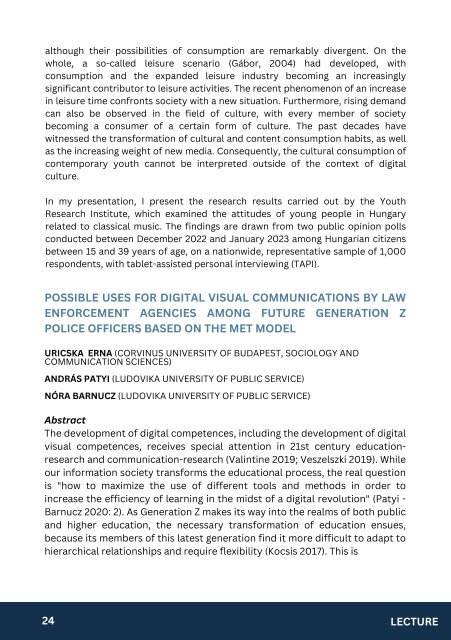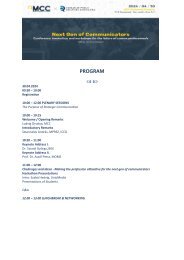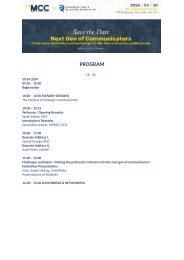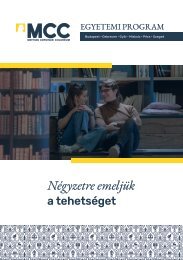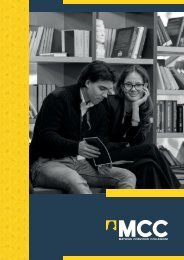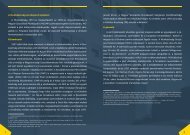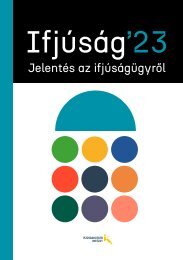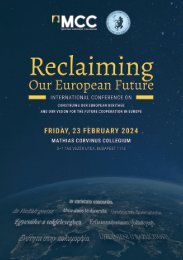Clout Culture - Youth Cultures in Changing Societes Conference
Create successful ePaper yourself
Turn your PDF publications into a flip-book with our unique Google optimized e-Paper software.
although their possibilities of consumption are remarkably divergent. On the<br />
whole, a so-called leisure scenario (Gábor, 2004) had developed, with<br />
consumption and the expanded leisure <strong>in</strong>dustry becom<strong>in</strong>g an <strong>in</strong>creas<strong>in</strong>gly<br />
significant contributor to leisure activities. The recent phenomenon of an <strong>in</strong>crease<br />
<strong>in</strong> leisure time confronts society with a new situation. Furthermore, ris<strong>in</strong>g demand<br />
can also be observed <strong>in</strong> the field of culture, with every member of society<br />
becom<strong>in</strong>g a consumer of a certa<strong>in</strong> form of culture. The past decades have<br />
witnessed the transformation of cultural and content consumption habits, as well<br />
as the <strong>in</strong>creas<strong>in</strong>g weight of new media. Consequently, the cultural consumption of<br />
contemporary youth cannot be <strong>in</strong>terpreted outside of the context of digital<br />
culture.<br />
In my presentation, I present the research results carried out by the <strong>Youth</strong><br />
Research Institute, which exam<strong>in</strong>ed the attitudes of young people <strong>in</strong> Hungary<br />
related to classical music. The f<strong>in</strong>d<strong>in</strong>gs are drawn from two public op<strong>in</strong>ion polls<br />
conducted between December 2022 and January 2023 among Hungarian citizens<br />
between 15 and 39 years of age, on a nationwide, representative sample of 1,000<br />
respondents, with tablet-assisted personal <strong>in</strong>terview<strong>in</strong>g (TAPI).<br />
POSSIBLE USES FOR DIGITAL VISUAL COMMUNICATIONS BY LAW<br />
ENFORCEMENT AGENCIES AMONG FUTURE GENERATION Z<br />
POLICE OFFICERS BASED ON THE MET MODEL<br />
URICSKA ERNA (CORVINUS UNIVERSITY OF BUDAPEST, SOCIOLOGY AND<br />
COMMUNICATION SCIENCES)<br />
ANDRÁS PATYI (LUDOVIKA UNIVERSITY OF PUBLIC SERVICE)<br />
NÓRA BARNUCZ (LUDOVIKA UNIVERSITY OF PUBLIC SERVICE)<br />
Abstract<br />
The development of digital competences, <strong>in</strong>clud<strong>in</strong>g the development of digital<br />
visual competences, receives special attention <strong>in</strong> 21st century educationresearch<br />
and communication-research (Val<strong>in</strong>t<strong>in</strong>e 2019; Veszelszki 2019). While<br />
our <strong>in</strong>formation society transforms the educational process, the real question<br />
is "how to maximize the use of different tools and methods <strong>in</strong> order to<br />
<strong>in</strong>crease the efficiency of learn<strong>in</strong>g <strong>in</strong> the midst of a digital revolution" (Patyi -<br />
Barnucz 2020: 2). As Generation Z makes its way <strong>in</strong>to the realms of both public<br />
and higher education, the necessary transformation of education ensues,<br />
because its members of this latest generation f<strong>in</strong>d it more difficult to adapt to<br />
hierarchical relationships and require flexibility (Kocsis 2017). This is<br />
24<br />
LECTURE


